In this review, we will highlight the possibility of a short tour of an interesting district of the capital. It is known as China Town. There are many attractions in Moscow, and to get to know everyone, the day will be clearly not enough, but if you do not have time, visit at least the most significant ones.
A one-day tour of the center of Belokamennaya usually begins with Red Square. The Kremlin adjoins it and the goal of our journey - China-City. In the article we will briefly dedicate you to the history of the district, tell you about the origin of the name and introduce it to its main attractions.
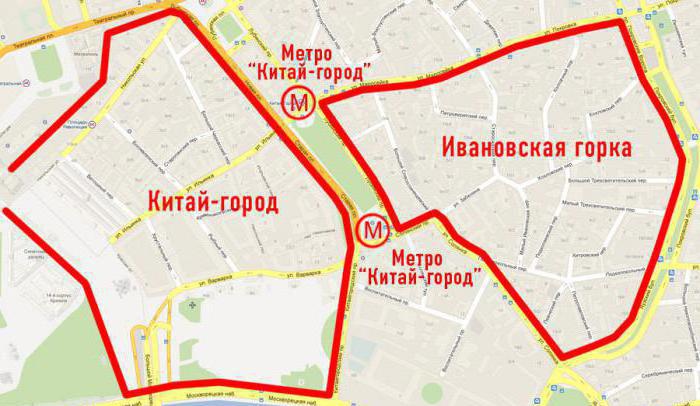
The exact location of the historic district
Kitay Gorod is located in Moscow, right next to Red Square itself. She adjoins him from the western side. In the north, the Kitay-Gorod district is bounded by Okhotny Ryad, Theater Square and Theater Train. The southern part reaches the Moskva River. Lubyanskaya and Old Square are the eastern border of the district. The area of Kitai Gorod is 70 hectares, and the length of the Kitai-Gorod wall as a whole was about two and a half kilometers. Currently, only individual fragments with several gates and towers have been preserved.
The tour starts at the metro station
The easiest way to get to Kitai Gorod is by metro. You need to take an electric train moving along the Tagansko-Krasnopresnenskaya or Kaluga-Riga lines. Exit - metro station Kitay Gorod. But do not rush to leave this place. This is where our tour begins. At the Kitay Gorod metro station, there is a well-preserved section of a stone wall with steps - a fragment of the foundation of the Barbarian Tower. A lot is connected with Saint Barbara in this area. We will talk more about this below.
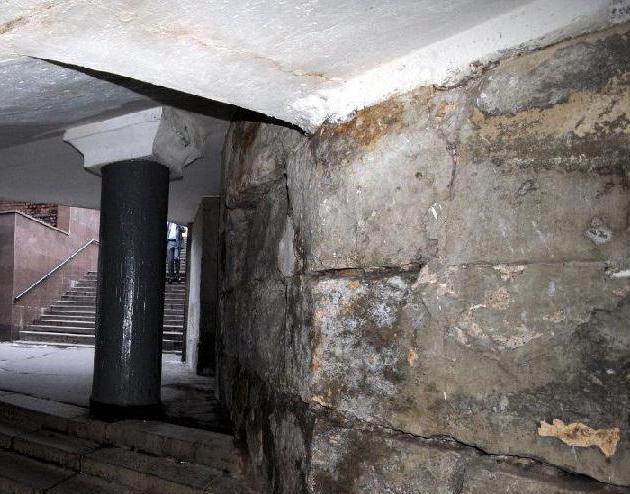
To explore the area of the capital that interests us, it is not necessary to go to the Kitai-Gorod metro station. You can catch an electric train running along Sokolnicheskaya, Zamoskvoretskaya or Arbatsko-Pokrovskaya lines and get off at the Okhotny Ryad, Lubyanka, Teatralnaya or Ploshchad Revolyutsii stations.

origin of name
The origin of the seemingly atypical topographic name for the Russian tradition has deep Slavic, and according to some sources, Latin roots. Our domestic China-city (in Moscow) has nothing to do with China, that is, with China.
The version closest to the truth claims that the word "whale" means a fence of wooden sticks fastened together, dug in a deep moat and lined with stones. The mother of Ivan the Terrible, Elena Glinskaya, thus ordered to enclose Moscow and protect it from the predatory raids of the barbarians. In her homeland, in Podolia, this is how the settlements were defended. In the future, the wall of China has undergone many changes. It was strengthened, rebuilt, broken passages and installed gates. Now it is a precious monument of ancient Russian architecture.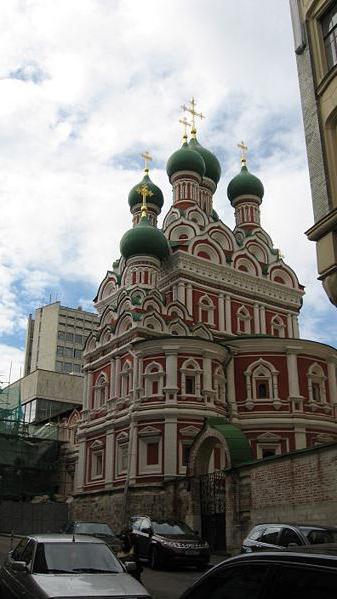
In memory of the Holy Great Martyr Barbara
Explore Kitai Gorod on a map of Moscow - it includes several lanes and three streets - Nikolskaya, Ilinka and Varvarka.
At Varvarka stands a church in honor of the Holy Great Martyr Barbara. It was built in 1514 under Prince Vasily Ioannovich the Third. The architect is Italian Aleviz Fryazin.
For a long time, particles of the relics of St. Barbara were kept in the church. Already in 1555, by prayer before the shrine, miraculous healings of diseases began to occur. Miraculous power is still present in this holy place, although the temple has undergone great changes over five hundred years. It was rebuilt several times, as Moscow fires did not spare him either.
At the time of the founding of the church, the area near it, an intersection, was called the sacrum. On special days, royal decrees were read here, and the rest of the time traditional healers sold medicinal herbs, spoke teeth and helped in other bodily ailments. Orphans were brought here as well, which compassionate Muscovites took to their families. This rather small church is still very loved by many Orthodox today.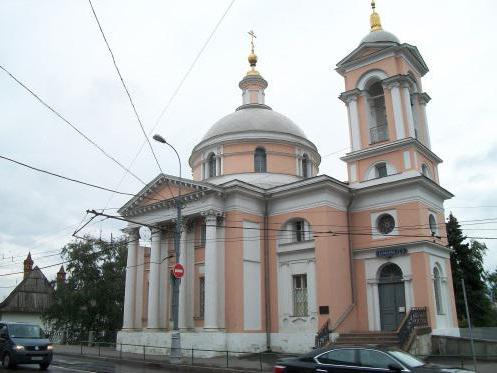
Znamensky monastery
Approximately in the middle of Varvarka Street, there is a man’s monastery of the Icon of the Mother of God “The Sign”. It was founded in 1631 in memory of the mother of Tsar Mikhail Fedorovich, nun Martha.
In 1668, the monastery was badly damaged by a large fire that destroyed many of the city’s wooden buildings. In the 80s of the seventeenth century, the complex was rebuilt, and a five-domed church built in two tiers was erected on the territory of the monastery. Upper consecrated in honor of the Sign of the Virgin.
The eighteenth century was a period of decline in the economy of the monastery. Only in recent decades have they begun restoration work in it - they painted it again, trimmed it with stucco molding and built a bell tower.
In 1812, the monastery was looted by French troops, but the buildings themselves remained unharmed. The main damage was soon eliminated.
Alexander II, who visited the monastery in 1856, drew attention to the unsightly condition of the chambers that once belonged to the Romanov’s family boyars, and ordered to restore them, turning them into a museum - the House of Romanov Boyars.
In the 20s of the last century, the monastery was closed, and in the 80s, an extensive restoration was carried out. Currently, it is one of the most beautiful functioning temples that can be seen by visiting Kitay-Gorod in Moscow.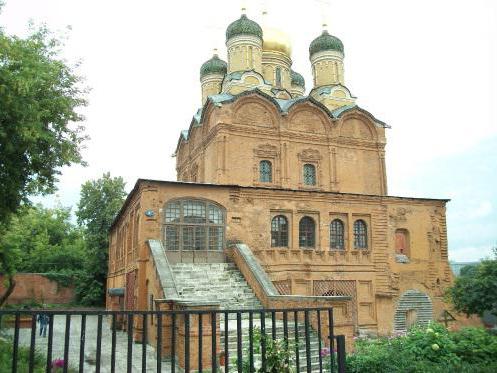
St. Basil's Cathedral
Once in the center of the capital, you can’t just walk past a very beautiful cathedral located in the very center of Moscow. This is one of the symbols of Russia - St. Basil's Cathedral. The metro station Kitay Gorod is quite close to the temple. If you go to the Barbarian Gate Square, then along Varvarka street it is easy to reach the cathedral itself.
Tsar Ivan the Terrible built it in honor of the victory over the Khazar kingdom and the conquest of Kazan. A decisive battle took place on the day of the celebration of the Protection of the Holy Virgin, therefore the church has another name - Pokrovsky Cathedral.
The start of construction dates back to 1555, and the end - 1561.
The height of the highest spire is 65 meters. The cathedral is crowned with nine chapters - according to the number of thrones devoted to church holidays, during which the main battles with the Mongol-Tatars took place.
Since its foundation, the Pokrovsky Cathedral has been carefully guarded and regularly restored by all the rulers of Russia. Indeed, according to legend, it symbolizes the Heavenly Jerusalem and is a divine charm of Russia.
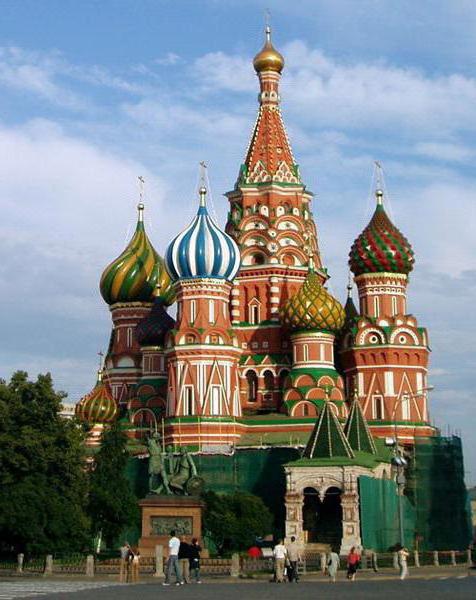
Monument to the Heroes of Pleven
Station "Kitay-Gorod" has access to the Ilyinsky Gates. Here, on Lubyanka Square, there is a monument-chapel erected in honor of the Russian grenadiers who died in battle near the city of Plevna during the Russian-Turkish war of 1877-1878. The creators of the monument are the architect and sculptor V.I. Sherwood and engineer-colonel A.I. Lyashkin.

The monumental cast iron structure was cast and assembled in the form of a tent in 1888. Four faces are decorated with high reliefs with touching and heroic subjects. Inside the chapel are the images of saints - Alexander Nevsky, John the Warrior, Nicholas the Wonderworker, Cyril and Methodius, as well as plates with the names of officers and soldiers who were killed on them, freeing Bulgaria from the Turkish Janissaries.
Resurrection Gate
Another attraction of Kitay Gorod is the Resurrection Gate. The construction has two arches, it looks monumental and very elegant. The gates are part of the Kitay-Gorod wall and are located between the buildings of the City Council and the Historical Museum. Everyone who has been on excursions around China City, note that this gate is the most decorative of all.The thickness of the pylons of 12.5x5 m allowed in 1680 to build up the gate and equip the Mint and the Main Pharmacy in the resulting wards. In 1731, these enterprises were moved to another place, and the vacated areas were given over to a university printing house.
The name of the gate has changed several times. Each time, the renaming was timed to some kind of everyday or historical event. In the chronicles, the following names have been preserved: Iversky, Trinity, Triumphal, Neglimensky, Epiphany, Kuretny and Lion. Lions, for example, they were called from the moat located between the Nikolskaya and Sobakina towers. It contained lions donated to Ivan the Terrible by the English Queen.

The gate was built in 1535. Authorship is attributed to Petrok Maly Fryazin. In 1935 they were demolished, and in 1995, under the direction of the architect O. I. Zhurin, restored.
